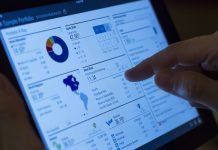Budgeting and reporting software can be a game-changer for businesses, helping them manage their finances efficiently and make informed decisions based on accurate data. However, with so many options available in the market, choosing the right one can take time and effort.
In this article, we’ll explore the benefits of budgeting and reporting software and provide tips on choosing the right one for your business. By the end of this article, you’ll have a clear understanding of what to look for in budgeting and reporting software and how it can help your business thrive.
As Dave Ramsey once said, “A budget is telling your money where to go instead of wondering where it went.” Let’s dive in and learn how to make the most of your finances with the right software.
Sure, here’s an outline for an article on “Budgeting and Reporting Software: How to Choose the Right One?”:
Overview of Budgeting and Reporting Software
Budgeting and reporting software is designed to help businesses manage their finances by providing tools to plan and track budgets, expenses, and revenue. This software creates financial reports, including balance sheets, income statements, cash flow statements, and other financial analysis reports.
It can be used by businesses of all sizes, from small startups to large corporations, and in various industries, including finance, healthcare, education, and government.
Budgeting and reporting software can help businesses operate more efficiently by automating repetitive tasks and streamlining financial processes. With accurate and real-time financial data, companies can make informed decisions based on analysis and insights from the software.
Additionally, the software can help identify areas of overspending and waste, providing opportunities for cost savings. By reducing errors and improving the accuracy of financial reporting, businesses can enhance transparency and accountability in financial management and meet compliance and regulatory requirements.
In short, budgeting and reporting software is a powerful tool for businesses to manage their finances effectively and make informed decisions based on accurate and timely financial data.
The Challenges of Choosing the Right Software
Choosing the proper budgeting and reporting software can take business time and effort. While the benefits of using this software are clear, selecting the right one that meets your business needs and budget can be challenging. Here are some of the main challenges that businesses may face when choosing the proper budgeting and reporting software:
- Complexity: budgeting and reporting software can be complex, with various features and functionalities that may be overwhelming for some businesses. The software may require technical expertise to set up and use effectively.
- Compatibility: some software may not be compatible with your existing systems, leading to integration issues and additional costs.
- Cost: budgeting and reporting software can be costly, and businesses may need to balance the cost of the software with its benefits and value for money.
- User adoption: even if a business selects the right software, employees will not be guaranteed to adopt and use it effectively, leading to wasted resources and a lack of ROI.
- Security: budgeting and reporting software may contain sensitive financial data. Hence, businesses must ensure that the software is secure and compliant with industry regulations.
Despite these challenges, choosing the proper budgeting and reporting software can be a worthwhile investment for businesses. By understanding these challenges and developing a plan to address them, companies can choose the right software that meets their needs and helps them master their finances.
Suze Orman once said, “A big part of financial freedom is having your heart and mind free from worry about the what-ifs of life.”
Benefits of Using Budgeting and Reporting Software
The importance of budgeting and reporting software for businesses can be summarized in the following bullet points:
- It helps companies to plan and track their finances more efficiently
- Provides accurate and real-time data for financial decision-making
- It helps identify areas of overspending and waste
- Streamlines financial reporting and reduces errors
- Enables collaboration and communication between teams and departments
- Provides a centralized view of financial data for better insights and forecasting
- Helps businesses meet compliance and regulatory requirements
- Improves transparency and accountability in financial management
How Can Financial Budgeting and Forecasting Software Help Businesses Manage Finances Efficiently?
Financial reporting and budgeting software can help businesses manage their finances more efficiently by providing them with tools and insights to improve their financial management practices. Here are a few examples of how this software can help businesses:
- Automating repetitive tasks: they can help businesses automate repetitive tasks, such as data entry, reporting, and analysis. By automating these tasks, companies can save time and focus on more strategic work.
- Real-time financial data: enterprises can access real-time financial data, enabling them to make informed decisions quickly. This data can include information on revenue, expenses, cash flow, and other financial metrics.
- Forecasting and scenario planning: they can provide companies with the ability to forecast and scenario plan, enabling them to model the impact of different business decisions on their finances. It can help enterprises to make better decisions and prepare for different outcomes.
- Tracking expenses and budgets: they can help businesses track their costs and budgets, allowing them to identify areas of overspending or waste. By monitoring these metrics, companies can reduce costs and improve their bottom line.
- Collaborating and communicating: they can provide a centralized platform for businesses to collaborate and share financial data. It can help different teams and departments work together more effectively and ensure everyone is on the same page regarding financial management.
Budgeting and reporting software can help businesses manage their finances more efficiently, reducing costs and improving their bottom line. Benjamin Franklin once said, “An investment in knowledge pays the best interest.”
Top Budgeting and Reporting Software Options for Businesses: A Comprehensive Overview
Here are some of the top budgeting and reporting software options, along with brief descriptions of their features:
QuickBooks
QuickBooks is a popular accounting software that offers budgeting and reporting tools. It allows users to create and track budgets, generate financial reports, and manage expenses and income.
Here are some of the unique features of QuickBooks:
- The software provides customizable financial reports, allowing enterprises to track and analyze their finances in real-time.
- It automatically tracks expenses by syncing with bank accounts and credit cards, making it easy for businesses to keep accurate records of their costs.
- It allows users to send invoices and receive payments online, streamlining the payment process for companies and customers.
- It provides tools for tracking inventory and payroll, allowing organizations to manage all aspects of their finances in one place.
- It offers a mobile app for on-the-go financial management, enabling users to manage their finances from anywhere.
Xero
Xero is another cloud-based accounting software that provides various financial tools, including budgeting and forecasting. It allows users to create budgets, track spending, and provide real-time financial data for reporting and analysis.
Below are some distinctive characteristics of Xero:
- The software provides real-time financial data, allowing users to stay up-to-date on their business’s finances at all times.
- It allows users to create and customize professional-looking invoices, helping firms to streamline the payment process.
- It supports multiple currencies, making it an excellent option for global companies.
- It integrates with a wide range of third-party apps, including CRM and inventory management tools, allowing establishments to manage all aspects of their finances in one place.
- It automatically imports bank and credit card transactions, making it easy for firms to reconcile their accounts and keep track of their expenses.
Zoho Books
Zoho Books is an online accounting software that offers budgeting and reporting tools and features for invoicing, inventory management, and more. It allows users to create budgets, track expenses, and generate financial reports.
Below are several exceptional features of Zoho Books:
- The software provides automated workflows for tasks such as invoicing, expense tracking, and payment reminders, saving companies time and effort.
- It offers project management tools, allowing businesses to track project expenses, create project invoices, and collaborate with team members.
- It provides tools for tracking and categorizing expenses, with options for attaching receipts and tracking billable costs.
- It features tools for managing inventory and tracking stock levels, making it an excellent option for businesses that sell products.
- It integrates with other Zoho apps, including Zoho CRM and Zoho Projects, enabling firms to manage all aspects of their operations in one place.
Sage Intacct
Sage Intacct is a cloud-based accounting software designed for small to medium-sized businesses. It offers budgeting and reporting tools and features for financial management, order management, and more. It allows users to create budgets, track expenses, and generate real-time financial reports.
Here are several notable features of Sage Intacct:
- The software offers a range of financial management tools, including accounts payable and receivable, general ledger, cash management, and financial reporting.
- It provides tools for managing multiple entities in a single system, such as subsidiaries or locations.
- It conveys time and expense management tools, with options for tracking time and expenses by project, customer, or department.
- It incorporates a range of third-party applications, such as Salesforce, ADP, and Bill.com.
- It provides robust security and compliance features, including SOC 1 and 2 Type II certification and compliance with HIPAA and GDPR.
FreshBooks
FreshBooks is a cloud-based accounting software that offers invoice, expense tracking, and time search features. It also provides essential budgeting and reporting tools, allowing users to create budgets and track spending.
FreshBooks distinguishes itself with the following unique features:
- The software includes a client portal, allowing users to share files and collaborate with clients in real time.
- It includes project management tools, allowing users to track time, expenses, and progress for specific projects.
- It provides tools for tracking and categorizing expenses, with options for attaching receipts and tracking billable costs.
- It offers a range of financial reports, including profit and loss statements, balance sheets, and expense reports.
- It fuses with a range of third-party apps, such as PayPal, Stripe, and Gusto, enabling users to manage all aspects of their business in one place.
YNAB
YNAB or You Need A Budget, is a cloud-based budgeting software that helps users create and manage their budgets. It offers features for tracking spending, setting goals, and generating reports. YNAB also provides personalized support and education to help users improve their financial management skills.
You Need A Budget (YNAB) is a popular budgeting software designed to help users gain control of their finances. Here are some of its most important features:
- The software’s unique Rule Four requires users to assign every dollar they have a job, helping them prioritize expenses and avoid overspending.
- It allows users to set financial goals, such as saving for a vacation or paying off debt, and provides tools to help achieve those goals.
- It automatically imports users’ bank transactions, helping them keep track of their spending and stay on top of their budget.
- It offers a mobile app for iOS and Android devices, enabling users to manage their finances on the go.
- It provides a range of financial reports, including income vs. expenses, net worth, and spending by category.
- It delivers educational resources, including live workshops and online courses, to help users build better money habits and improve their financial literacy.
IDU
IDU is a budgeting and reporting software that is designed for mid-sized businesses. It offers budgeting, forecasting, and financial reporting features, as well as tools for managing expenses, inventory, and project costs. IDU also integrates with other business software systems, such as ERP and CRM.
The software is a budgeting and reporting software designed to help businesses manage their finances more efficiently. Here are some of its most significant features:
- IDU integrates with various other software systems, including accounting software, ERP systems, and business intelligence tools.
- The software provides a streamlined workflow process, enabling users to collaborate and communicate more effectively when managing their finances.
- It has robust security features to keep sensitive financial data safe, including role-based access controls, encryption, and user authentication.
- It provides comprehensive training and support services, including user manuals, online tutorials, and customer support, to ensure that users can use the software effectively and get the most out of its features.
PlanGuru
PlanGuru is a budgeting and forecasting software designed for small to mid-sized businesses. It offers features for creating financial statements, generating reports, and analyzing financial data. It also provides integration with other accounting and financial software systems.
It is designed to help businesses make more informed financial decisions. Here are some of its most essential and unique features:
- The software’s scenario planning tool enables users to create “what-if” scenarios to test the impact of different business decisions on their financial performance.
- It allows users to create custom reports and economic models to meet their specific needs, giving them greater control over their financial planning and analysis.
- It offers specialized tools and templates for non-profit organizations, including budgeting and forecasting tools tailored to the needs of non-profit finance.
- It allows users to collaborate on financial forecasts, enabling teams to work together on budgeting and forecasting activities.
- It provides a business valuation tool, allowing users to value their business based on various financial and non-financial factors.
Float
Float is a cloud-based cash flow forecasting and budgeting software for small businesses. It offers features for tracking expenses, forecasting cash flow, and generating financial reports. Float also provides integration with other accounting and financial software systems.
Here are some of the distinctive features of Float:
- The software integrates with users’ bank accounts, making tracking their actual cash position against their forecasts easy.
- It enables users to create “what-if” scenarios to test the impact of different business decisions on their cash flow.
- It automatically syncs with users’ accounting software, saving them time and reducing the risk of errors.
- Its user-friendly dashboard displays vital cash flow metrics and allows users to identify potential cash flow problems quickly.
- It supports multiple currencies, making it an excellent choice for businesses operating in international markets.
Tidemark
Tidemark is a cloud-based financial management software that offers budgeting, forecasting, and financial reporting features. It also provides features for analytics and collaboration, enabling users to share financial data and insights across teams and departments.
Here are some of the key features of Tidemark:
- Its planning and forecasting tools allow users to create detailed financial models and forecasts.
- Its analytics and reporting tools enable users to track performance metrics and analyze financial data.
- Its budgeting and forecasting tools give users a clear view of their financial position and help them make informed decisions.
- Its collaboration features allow users to share data and collaborate on financial plans and reports.
- It is accessible via mobile devices, allowing users to view financial data and make decisions.
- It is cloud-based, making it easy to access financial data from anywhere and ensuring that data is secure and backed up.
Each of these budgeting and reporting software options provide different features and functionalities to meet the needs of various businesses. Choosing the right software requires careful consideration of budget, business size, and financial goals. Benjamin Franklin once said, “An investment in knowledge pays the best interest.”
Factors to Consider When Choosing Budgeting and Reporting Software
When choosing budgeting and reporting software, businesses need to consider several key factors to ensure that the software they choose meets their needs and provides value for money. These factors include the type of software, user-friendliness, features and functionalities, integration with other systems, and cost and value for money.
By considering these factors, businesses can choose the right software that aligns with their business needs and goals and provides the tools and insights to help them manage their finances effectively. As Maya Angelou once said, “Do the best you can until you know better. Then when you know better, do better.”
- Type of software: businesses need to determine which budgeting and reporting software is best for their needs. They can choose between desktop, cloud-based, or hybrid software that combines both options.
- User-friendliness: the software should be easy to use and understand, with a user-friendly interface that makes it accessible for all team members.
- Features and functionalities: the software should provide the necessary parts and functionalities that align with the business needs, such as customizable dashboards, real-time reporting, forecasting, and scenario planning.
- Integration with other systems: the software should integrate seamlessly with other methods, such as accounting software, CRM software, and other business management tools.
- Cost and value for money: businesses need to consider the cost and value of capital when choosing budgeting and reporting software. The software should align with the business budget, provide a good ROI, and help the business achieve its financial goals.
By considering these factors, businesses can choose the proper budgeting and reporting software that aligns with their needs and goals. As Warren Buffett once said, “Price is what you pay. Value is what you get.”
Tips for Choosing the Right Budgeting and Reporting Software
Choosing the proper budgeting and reporting software can take time and effort for any business owner. With so many options available in the market, it can be overwhelming to determine the best fit for your business needs.
To help you make the right decision, here are some tips to consider when choosing budgeting and reporting software:
- Identify your specific needs: every business has unique requirements when it comes to budgeting and reporting. Before selecting software, identify what you need it to do for your business. Consider factors such as the size of your business, the complexity of your financial processes, and the number of users who will need to access the software.
- Check for user-friendliness: look for software that is easy to use and has an intuitive interface. If it’s simple enough, it may be difficult for your team to use, and you may waste time and money trying to get everyone up to speed.
- Consider the software’s features: look for software that offers the specific features you need. For example, if you need to create detailed budgets or analyze data in real time, look for software that can do this.
- Integration with other systems: make sure the software can integrate with your other business systems, such as your accounting software, CRM software, or project management tools.
- Consider the vendor’s reputation and customer support: research the software vendor’s reputation and customer support. Look for online reviews, customer feedback, and any awards or accolades the software has received.
- Evaluate the software’s scalability: choose software that can grow with your business. It will ensure that you won’t need to switch to another software as your business grows.
- Look for cloud-based software: cloud-based software is more flexible and accessible than traditional software. It allows your team to access data from anywhere, anytime.
- Consider security features: your financial data is sensitive and confidential. Make sure the software you choose has robust security features that can protect your data from unauthorized access.
- Evaluate the cost and value for money: select cost-effective software that offers good value for money. Ensure you understand the pricing model and that there are no hidden costs.
- Take advantage of free trials and demos: before making a final decision, take advantage of free trials and demos to test the software’s features and usability. It will give you a better understanding of how the software works and whether it suits your business.
The Importance of Choosing the Right Budgeting and Reporting Software for Your Business
Financial reporting and budgeting software is essential for businesses to manage their finances efficiently. Choosing the right software can significantly impact a company’s financial health and success. The software provides an accurate, real-time view of financial performance, enabling businesses to make informed decisions based on current data.
The importance of financial reporting and budgeting software is in its ability to streamline financial operations, eliminate errors, and reduce the time it takes to generate reports. These systems automate tedious tasks and allow businesses to focus on more strategic financial planning.
It also helps companies to budget effectively, manage cash flow, and make informed decisions that drive growth.
By investing in the proper financial reporting and budgeting software, businesses can gain a competitive edge, ensure compliance with financial regulations, and achieve their long-term financial goals. With the right tools and insights, companies can make informed decisions, optimize their financial performance, and achieve sustainable growth.
Conclusion
Choosing the right financial reporting and budgeting software is crucial for the success of any business.
By carefully considering the type of software, user-friendliness, features and functionalities, integration with other systems, and cost and value for money, businesses can ensure that they invest in a tool that will help them manage their finances more efficiently. It’s essential to assess your business’s unique needs and explore various options to find the best fit.
With the right software, businesses can gain greater visibility into their finances, make better-informed decisions, and ultimately achieve their financial goals.












![[2023] Top 15 Financial Consolidation Tools](https://financewoods.com/wp-content/uploads/2023/02/secretary-g10cb2a322_1920-218x150.jpg)